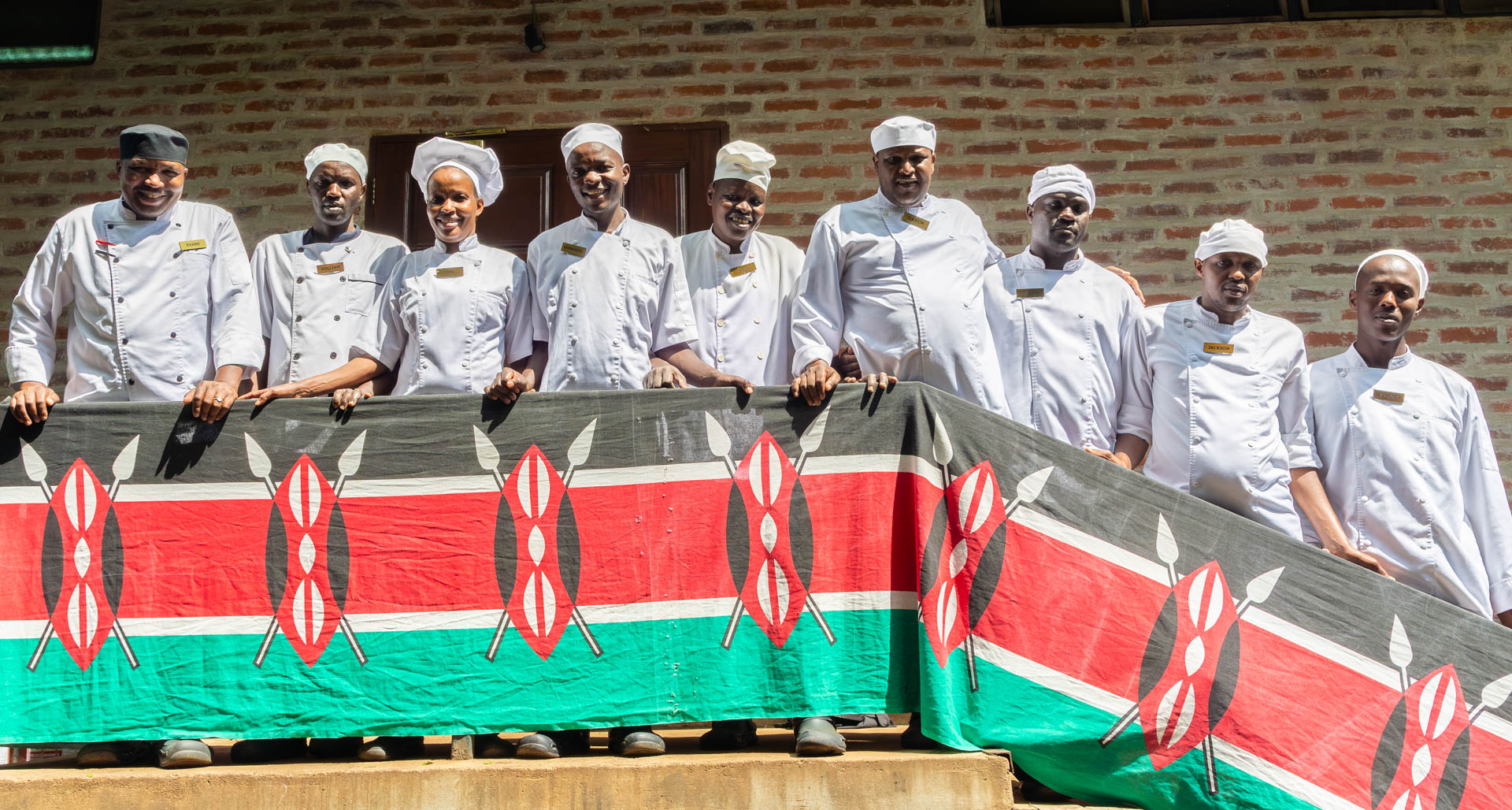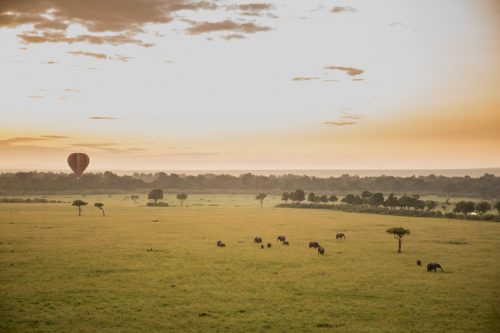
Most people come to Kenya for the safari and we are pleased when our guides show them good sightings. It also means that they come back from their game drives hungry and we are always ready to serve them a delicious meal. Maybe, what a lot of travellers to Kenya don’t know before they get here is that we have delicious foods.
Kenya has many different cultures and traditions and we celebrate them here at Angama with cultural nights for our team — and a big part of our culture is the food. We also wanted to share this with our guests so we decided to offer a special platter for those guests wanting to eat the Kenyan way. Traditionally, it’s not typical to have these all together at one meal because they come from many different parts of the country but we want to show our guests the variety of Kenyan flavours and cuisines.
Each dish in the platter is given its Kenyan name, that way we serve them the traditional way. First off, we have ugali which is the staple dish for everybody in Kenya. Like in many other African cultures, it is made from white or yellow cornmeal, salt and hot water and it has a firm consistency. The best way to eat it is with your hands — don’t be shy! You pick up some in your hand and roll it into a ball and you can even hollow out the middle and put some of the other food in it, like a spoon.
Next, we make nyama choma which is Swahili for meat on the grill. It is unofficially considered Kenya’s national dish, but as I said, there is no one food that represents the country. Usually, this is beef but when there is a big celebration, we do mbuzi which is goat. Goat meat is a delicacy here and traditionally we only cook it for a wedding or a big party; we buy our goat meat locally (after it has been checked and certified by from the Department of Public Health).
There is also mukimo ya githeri which comes from central Kenya, from the Kikuyu and Meru people. This is like a mashed stew with red beans, potatoes, onion, meat and corn in a rich tomato and beef gravy spiced with curry powder, paprika and pili pili (chilli). You can eat this with chapati, which is every guest’s favourite. Originally from the coast of Kenya, it's unlike Indian chapati that’s rolled out thinly and made without any oil. Here, it's thicker and with a few layers; the outer layers are brushed with oil before being browned on both sides in a pan to give it a crispier texture.
You might also find irio (mashed potatoes with peas and corn,) sukama wiki (braised collared greens) and kachumbari on your platter. These are all delicious, vegetable-based dishes from all over Kenya. Kachumbari is the only fresh dish we have, a type of salad of thinly sliced tomato and onion. It compliments the other dishes well, especially mbuzi choma. The tomatoes and onions from the south of Kenya are the best as they grow well in the volcanic soil around Mount Kilimanjaro.
The Kenyan Platter is a celebration of dishes from all over Kenya. It’s like us; we come from different cultures and communities — we have Maasai chefs, there is me from Kisii, we also have Luo and Luhya chefs and so on — all these people make different traditional food. Each chef makes their speciality dish from their culture, hoping to share a bit of their traditions with our guests.
For the slightly more adventurous eaters among you, when you next find yourselves at Angama Mara, we invite you to speak to your Butler about ordering the Kenyan Platter.
Filed under: Inside Angama
Subscribe for Weekly Stories
Comments (0):

Hot-air Ballooning